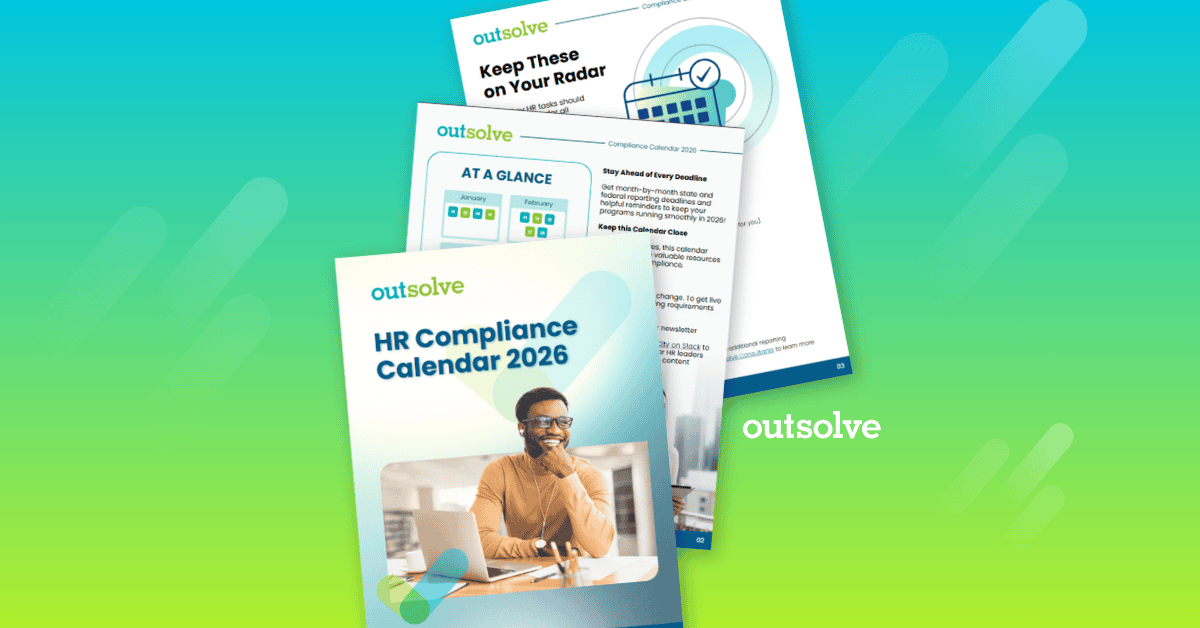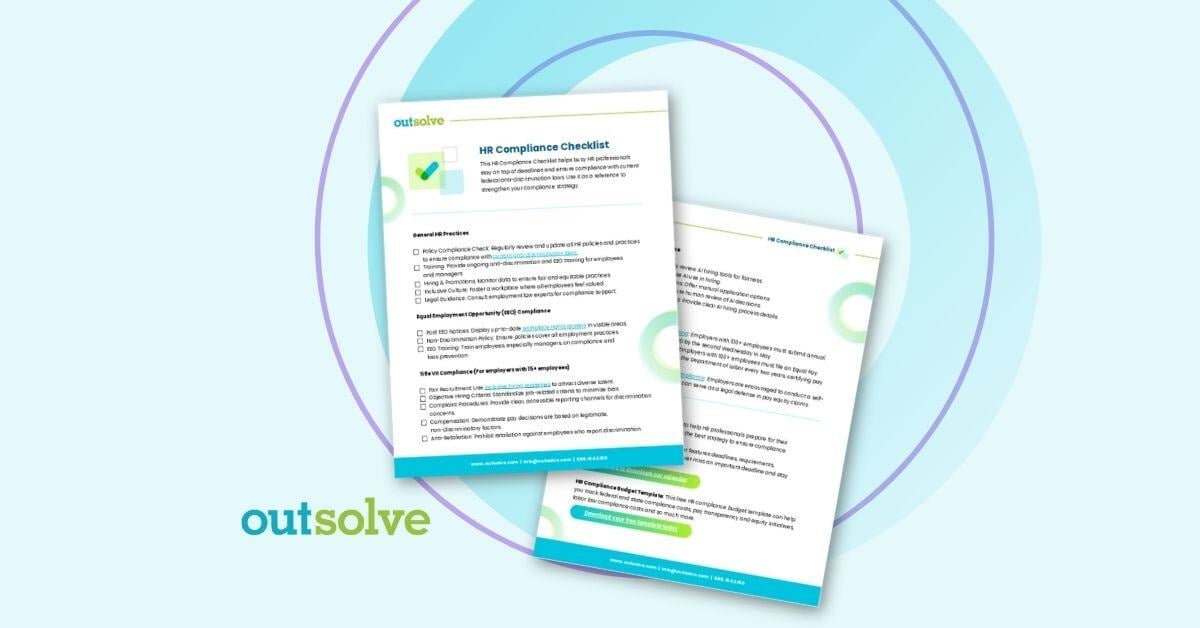6 min read
What are I-9 Retention Requirements: What to Keep, What to Discard?
 Beth Montgomery
:
May 7, 2025 4:26:51 PM
Beth Montgomery
:
May 7, 2025 4:26:51 PM

Let’s be honest, I-9 retention is one of HR’s “do-it-right-or-pay-later” responsibilities. If you've ever asked yourself “How long do I really need to keep this Form I-9?” you're not alone.
Welcome to an HR-friendly, easy-to-understand guide on I-9 retention requirements.
Here are three key takeaways you’ll learn in this article:
- The drivers behind Form I-9 retention requirements.
- Specific retention requirements and a step-by-step retention calculation process.
- Common Form I-9 retention challenges and tips for remaining compliant.
Why I-9s and Their Retention Matter
The Form I-9 may be short but it is a critical document that every employer is required to complete for each new hire to verify their identity and authorization to work in the U.S. Seems simple, right? But when it comes to retaining these files, that’s where the process can become tricky.
Why does this matter so much? For many important reasons, such as:
- Legal compliance: The Immigration Reform and Control Act (IRCA) requires it. Period.
- Audit readiness: The Immigration and Customs Enforcement Agency (ICE) can audit your company’s I-9s with little or no warning, so you need to have a Form I-9 on file for all current and certain terminated employees.
- Avoiding fines: Penalties for noncompliance can run in the thousands per form.
Proper I-9 retention might seem simple, but if not done correctly it can be costly to your organization. It’s a fairly simple process that can keep you in compliance and out of hot water.
What Are the I-9 Retention Requirements?
The golden rule for keeping I-9 forms for your employees is:
Make sure you have a Form I-9 complete and accurate for all current employees: Be sure to retain a completed I-9 and supporting document on file for each active employee. Once an employee leaves the company, regardless of if they left voluntarily or involuntarily, the same retention time frames apply, so update your records accordingly.
Keep each Form I-9 for 3 years after the date of hire, or 1 year after the date of termination, whichever is later: Let’s break it down a bit further with these examples:
- If someone works for you less than 3 years, then you might be holding that form for 4+ years.
- If they’re with you for 10 years, then you only need to keep their I-9 for 1 year after they leave.
What about seasonal, part-time, and temporary employees: Retention requirements sound simple until you start adding in terminations, temporary assignments, and seasonal workers. However, the same retention rules apply to them as to all your other employees. Even if someone only worked with you for a summer or a week, as long as they were on your company payroll, their I-9 falls under the same retention guidelines.
It’s important to note that if you engage a contingent worker employed through a third party, such as a staffing agency, then it’s the staffing agency’s responsibility to obtain and retain a Form I-9 on that individual. That’s because the individual is an employee and on the payroll of the staffing agency, and not an employee of your company.
How to Calculate the I-9 Retention Deadline
Here’s where HR sometimes gets confused and lost in the details. Let’s look at a simple overview and reference on how to calculate the Form I-9 retention timelines:
Here’s a Step-by-Step Retention Calculation:
- Take the employee’s hire date.
- Add 3 years to the employees hire date (this gives you one potential disposal date)
- Take the employee’s termination date.
- Add 1 year to the employees termination date (this gives you the other disposal date)
- Pick the later of the two. That’s your official purge date.
Here’s a Quick Reference Box Example:
| Scenario | Hire Date | Termination Date | Retain Until |
|
Still Employed |
Jan 1, 2021 |
N/A |
Ongoing |
|
Terminated |
Jan 1, 2017 |
June 1, 2021 |
June 1, 2022 |
|
Seasonal Hire |
May 1, 2019 |
Aug 1, 2019 |
May 1, 2022 |
Simple? Yes. Easy to manage for 500+ employees? Not so much. Unless you’ve got a system. Speaking of which..
What Are the Storage and Accessibility Requirements?
Now that you know what to keep and how long, let’s talk about how/where to store Form I-9s. There are several acceptable storage formats, including:
- Paper: Classic manila file folders or binder in a locked cabinet, away from the employee's personnel file. Note that there should be limited accessibility to this information.
- Electronic: Totally acceptable, but must follow the U.S. Citizenship and Immigration Services’ (USCIS) rules around:
- Indexing
- Accessibility
- Security
- Ensuring I-9 audit trails are included
- Microfilm/microfiche: Yes, it’s still an acceptable and legal retention method so it’s worth mentioning, but most companies don’t use these systems anymore.
And if that’s not enough, here is the bottom line: No matter how you store them, you must be able to produce the forms within three business days for a typical notice of inspection by the government. This is where a disorganized filing system becomes a liability.
Companies can request an extension beyond 3 days, but that request is not always granted and is more an exception than the rule. With that said, you need to assume that you’ll only have a response time of 3 business days, so being organized and ready to pull the documents will be of the utmost importance and save you a lot of time and stress.
Speaking of staying organized, here are some helpful tips and action items for HR:
- Keep Form I-9s separate from general personnel files. Most often, I-9s are maintained in a file (electronic or hard copy) or binder that is accessible only to a few individuals in HR. Supervisors or managers should not have regular access to I-9 forms and documents because national origin, immigration status, marital status and other protected information may be disclosed on these forms or in the documents provided for their completion.
- Clearly label folders by year or purge date.
- Use color-coded folders or digital flags for I-9s nearing their expiration.
- Create a separate section for terminated employee Forms I-9s. When an employee is terminated, employers should pull the Form I-9 from the active employee section and determine retention requirements before filing in the terminated Form I-9 section of the binder or file.
Purging Old I-9s: Why and How
Let’s talk about decluttering with purpose. Holding on to expired I-9s forever is like hoarding old tax returns or middle school report cards, unnecessary and potentially risky!
Why Purge?
- Data minimization: The less data you have, the less risk you carry in a breach.
- Legal protection: Holding expired forms during an audit could expose errors that didn’t need to be seen.
- Operational efficiency: Clean files = smoother audits.
Steps to Purge:
- Confirm retention eligibility using the step-by-step method above.
- Document your purge activity by including employee name, dates, and who approved the deletion.
- Maintain an audit trail in case questions arise later.
What Not to Do:
- Don’t purge forms before their required date (that’s a compliance error and could put you at risk for potential fines during an ICE audit).
- Don’t keep them indefinitely “just in case.”
- Don’t delete digital I-9s without keeping a record of the purge.
Common Mistakes HR Teams Make
Let’s face it, we’re all juggling so many different work projects and initiatives. These are the most common I-9 retention errors:
- Holding on to forms too long – often out of fear of noncompliance, this creates unnecessary risk.
- Discarding too soon – especially after short-term employees exit.
- Mixing I-9s with other personnel files – makes audits a nightmare.
- Failing to train HR staff on I-9 form retention rules.
Each of these mistakes can easily spiral into costly compliance issues. The good news? They’re all preventable with a bit of process and oversight.
Tips for Staying Compliant
Here’s where we go from reactive to proactive. Compliance doesn’t have to be scary, just consistent. Once you have a procedure established, storing and organizing your Form I-9's will be a walk in the park.
Your I-9 Compliance Toolkit:
- I-9 Retention Log or Schedule: A shared spreadsheet or HRIS tracker can flag upcoming purge dates.
- Periodic Internal Audits: Twice a year, review a random batch. You’ll catch issues before ICE does. Be certain that you document your proactive internal audits, which can be as simple as maintaining a log of the date of the internal audit, who conducted the audit and a description of the batch reviewed (size of the batch, if random selection, etc.). It is a best practice to maintain this log at the beginning of the I9 folder or binder.
- Staff Training: Training is key! Make sure your team knows the difference between hiring compliance and retention compliance.
- Use Alerts/Reminders: Many HR systems can flag I-9s approaching the purge date. Use it!
Staying on top of your I-9 record retention should give you some peace of mind at work—and it shows you’re serious about your HR compliance commitments.
What Form I-9 Retention Requirements Mean for Your Organization
We covered quite a bit of ground in this article. Let’s recap the key messages:
- The I-9 retention requirement for terminated employees is 3 years from hire or 1 year after termination —whichever is later.
- Proper storage, accessibility, and organization are essential.
- Don’t forget to purge eligible I-9s, but only once it’s legally safe to do so.
- Avoid common mistakes like mixing I-9s with personnel files or keeping forms too long.
- Set up simple systems to stay compliant and audit-ready.
Remember, I-9s are one of those “behind the scenes” compliance items which require detailed processes in order to avoid penalties. You may not think about them daily, but if they’re not handled correctly and efficiently, they can cause you and your organization headaches and legal issues. So, do yourself a favor: block off time this week to review your current I-9 process. With an increase in Form I-9 audits, you’ll be glad you were proactive.
If you already have a system in place, good for you! Keep it sharp, keep it current, and keep educating your team. I-9 retention might not be glamorous, but mastering it? That’s HR excellence.
Looking for guidance and advice on Form I-9 compliance and best practices? Reach out to one of our OutSolve consultants who can help.
Beth has over two decades experience in HR compliance consulting and non-discrimination planning. She currently serves as Senior Director of Operations at OutSolve. Beth combines her experience as a hands-on federal contractor with her knowledge of regulatory requirements to provide support to her clients in designing and monitoring their non-discrimination programs, providing guidance on Form I-9 compliance, and conducting proactive Form I-9 audits. Beth also partners with Talent Acquisition Teams to help maximize the impact of strategic disposition reasons and advises how to monitor these results in combination with recruitment sources to get the best ROI. Prior to joining OutSolve, Beth was a Director of Affirmative Action for a Fortune 300 federal contractor where she managed a non-discrimination program for 100,000+ employees and successfully coordinated hundreds of audits. Beth is a graduate of the University of Louisville.
Weekly OutLook
Featured Posts

New Year, New Deadlines: 2026 HR Compliance Calendar

outRageous HR: Plan Now or Pay Later
Related Posts

Refreshing Your I-9 Tools and Process to Stay Compliant
Form I-9 is a federal requirement that carries real consequences if handled improperly. With increased scrutiny on immigration by the current...
.png)
New Year, New Risk: Why Federal Contractors Can’t Hit Snooze
Lean in to disciplined, data‑driven compliance

An HR Year in Review: Key Updates in 2025
The unpredictability of 2025 has been an uphill trek for HR teams across the U.S. This year brought substantive employment compliance changes to...


